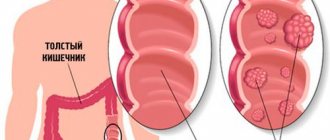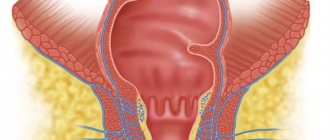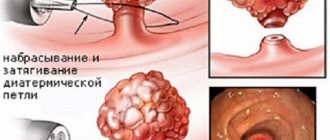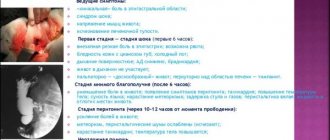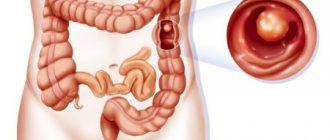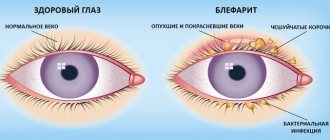There are many factors why mucus appears from the anus, the reasons vary from an infectious disease to poisoning. The symptom is typical with or without defecation in both men and women suffering from proctological diseases, as well as in children who have inflammation of the rectum. The main sign of the presence of mucus is its detection in the stool or discomfort in the anus.
To cope with a symptom, it is necessary to find the primary cause of its occurrence. The fight against the disease begins after an accurate diagnosis and receipt of instructions from a doctor.
Characteristics of the symptom
Mucus from the anus is transparent or colored masses that accumulate on the walls of this organ and cause inflammation of the mucous membrane and discomfort. In general, the secretion of mucus from the anus is a natural process for the body that helps remove processed masses from the intestines. However, with normal functioning of the gastrointestinal tract, it does not go beyond the excretory tract. If the mucus that appears gets into the feces or is spontaneously released from the passage without action on the part of the patient, then this is a sign of one of the possible diseases.
A characteristic feature of this symptomatology is that mucous discharge from the anus is eliminated from the body regardless of the patient’s actions. It can end up outside the body without any tension in the gastrointestinal tract muscles or bowel movement. Experts call such discharges spontaneous type discharges.
This type causes particularly severe discomfort in patients.
Diagnosis of anal discharge
If unusual anal discharge appears, you should see a doctor as soon as possible and find out what the cause is. With such a problem, they turn to a proctologist, who collects an anamnesis and examines the anal area. If after these procedures it is not possible to establish a diagnosis, then additional diagnostic procedures are prescribed:
- endoscopic examination of the gastrointestinal tract;
- intestinal radiology.
Microlax will help cleanse your intestines before going to the doctor.
To ensure that the diagnostic results are as accurate as possible, a cleansing enema is performed before visiting the doctor and performing any manipulations. It is also possible to use the drug Microlax, which cleanses the intestines, before diagnosis. During diagnosis, the patient does not feel pain, only mild discomfort is possible. You should not delay diagnosis and treatment of problems in the anal area, since over time the pathology worsens and can lead to oncology.
Causes of mucus
Mucus may be released from the anus due to food poisoning or consumption of unusual foods. There are also more serious reasons for this phenomenon:
- hemorrhoids are the most common cause;
- cancerous and benign tumors;
- chronic mucous inflammation of the rectum;
- infection caused by bacteria;
- sexually transmitted diseases (STDs), including gonorrhea;
- herpes;
- fistula.
Mucus from the anus may be a mild symptom of one of the above diseases and not cause additional discomfort. It is such if it appears only when visiting the restroom. However, even when mucus is released without sphincter tension, mucus becomes a serious problem. It is physically unpleasant, can cause inflammation, even the transparent type creates hygiene difficulties and may have a specific unpleasant odor. This is especially true for oily discharge from the anus.
The color and other features of the mucus that appear will help distinguish one cause of mucus from another. The mucus in the stool with hemorrhoids is reddish. An orange-colored substance indicates liver problems, and if the stool after visiting the restroom is covered with a white coating, the patient is more likely to be infected with bacterial infections (it may also be yellow in color).
An oily texture is a sign of poisoning. If blood is noticed in the stool, this indicates either a breakthrough of hemorrhoids or tumor diseases. Purulent discharge from hemorrhoids indicates late stages of pathology; they are also characteristic of Crohn's disease, when the lower parts of the rectum, close to the surface, are covered in purulent discharge. Transparent mucus from the anus is a symptom of poisoning or ingestion of unusual food.
With the development of the most serious diseases, blood begins to come out with each bowel movement. The process of defecation is accompanied by pain, and not just the release of mucus. This symptomatology is typical for condylomas, STDs, cancerous and benign formations.
Types of discharge for hemorrhoids
Discharge from the rectum may vary. It depends on the patient's condition.
- Colorless, transparent liquids appear at the initial stage, indicating ongoing pathological processes, but the absence of serious complications so far.
- Turbid discharge is the beginning of the inflammatory process, exacerbation and development of the disease.
- Mucous bleeding is most often associated with a ruptured hemorrhoid, is fraught with serious consequences, and requires an immediate visit to the doctor.
- Purulent inclusions in the stool, often with an unpleasant odor, are serious symptoms with dangerous complications.
Slime
The intestines of a healthy person should secrete mucus, this is normal. This lubricant is synthesized by special cells located on the intestinal villi and is a necessary condition for comfortable bowel movements, facilitating the painless movement of feces to the anus. The discharge is light and visually invisible.
Causes not related to inflammatory processes:
- colds and flu, when secretions from the organs of the bronchopulmonary system enter the gastrointestinal tract;
- eating large quantities of cottage cheese, oatmeal, watermelon or banana products;
- In a newborn baby, the presence of mucus is associated with insufficient production of a special enzyme. The problem is especially noticeable if he is bottle-fed and deprived of breast milk.
If the discharge becomes cloudy, acquires an unpleasant odor and color, this indicates serious problems.
- Orange veins indicate excessive secretion of bile and pathologies with the gallbladder.
- White cloudy jelly-like inclusions that do not mix with feces indicate a fungal infection.
- Yellow or greenish - indicates the presence of pus, an infectious lesion of the intestines or other organs.
- If there is blood in the stool, then most likely the hemorrhoidal node has ruptured. The discharge can be quite heavy, staining your underwear between trips to the toilet.
- There are so-called serous discharges, the cause of which is hemorrhoids. This mucus protects the heart, lungs and abdominal organs from sticking together during inflammation, and is produced by them for their own protection. Serous discharge from the anus indicates that pathological processes occur in the lymph.
All this suggests that serious pathological processes are occurring in the body, the cause and treatment of which can only be determined by a specialist.
Often, mucus discharge from the rectum occurs after surgery. This phenomenon is normal and is associated with the restoration of the intestinal mucous walls and their protection from the negative effects of feces. The consistency of the mucus resembles a jelly-like mass, has a pink tint and a worm-like shape.
Read more about mucous discharge from hemorrhoids in our article.
Purulent discharge
Cloudy exudate in the form of pus means inflammatory processes of an infectious, complicated nature. And here you definitely need urgent medical attention, because the problem will most likely be solved surgically.
The exudate is characterized by a yellow tint, sometimes with a strong unpleasant odor, and has a viscous consistency.
Occurs due to thrombosis of hemorrhoidal cones or inflammatory processes in the tissues near the rectum, paraproctitis.
It is always accompanied by severe pain, burning, itching in the anal area, increased temperature, and deterioration in general well-being.
Appears as a result of an advanced disease, with complete inattention to one’s health. The abundance of discharge at the third stage of hemorrhoids, the formation of a large number of microcracks causes inflammatory processes, and the penetration of pathogenic microflora completes the process with purulent inflammation.
Discharge of pus can occur with:
- rectal cancer, other neoplasms;
- spontaneous breakthrough of a pararectal abscess;
- ulcerative colitis;
- fistulas;
- infection from stool into the wound after surgery.
Symptoms of purulent hemorrhoids:
- pus, often mixed with mucous or bloody discharge;
- elevated temperature;
- a constant false desire to empty the intestines, which is grounds to assume the presence of a tumor in the intestines;
- deep cracks, erosions in the perineum resulting from softening of tissues;
- acute paraproctitis is associated with the presence of a purulent abscess, which gives the patient unbearable pain, swelling and redness of the mucous membranes. The temperature rises. The situation requires immediate surgical intervention, opening the abscess, and removing exudate. After this, the patient feels much better;
- advanced acute form of paraproctitis contributes to the transition to the chronic stage, characterized by the formation of fistulas - thin purulent canals that become inflamed over time and lead to an abscess.
Treatment of purulent hemorrhoids
You should be aware that only a proctologist can treat advanced purulent forms of hemorrhoids. And the sooner the better. It will take quite a long time.
Otherwise, inflammatory processes will spread to the pelvic organs. In men - in the urethra, and in women - in the vagina.
Most likely, you will have surgery.
If the processes are minor, the doctor may prescribe therapy in the form of antibiotics using anti-inflammatory ointments and gels.
After the operation the patient feels much better. The temperature drops and the symptoms of intoxication disappear.
After some time, the patient will have to undergo another operation related to the removal of the hemorrhoidal lump itself.
If paraproctitis has already become chronic, then the resulting fistulas also need to be removed, otherwise their periodic inflammation can cause malignant neoplasms.
Blood
Bloody exudate appears mainly due to injury to the hemorrhoids by feces. With prolonged constipation, the feces become hard, easily damaging not only the thin walls of the cones, but the intestinal mucosa itself.
If the discharge is scarlet, the inflammation is not too severe. If your blood is bright red, you should immediately consult a doctor.
Diagnosis of mucous discharge
Detecting mucus in hemorrhoids, gonorrhea, and tumors is quite simple: it is noticeable in stool or underwear, and can be felt when discharged from the anus. But sometimes the patient is not aware of its presence and notices only secondary symptoms of its release during hemorrhoids or STDs.
In addition to the appearance and the fact that the walls of the passage are covered with mucus (oily structure), its presence is indicated by:
- itching and burning in the anus;
- yellow spots on the skin;
- feeling of unreasonable oily stickiness between the buttocks;
- unpleasant odor if all hygiene standards are observed;
- ichor or blood on underwear;
- defecation with feces covered with a white film, flaky particles, blood, pus;
- the appearance of white and yellow spots on clothing adjacent to the anus.
If these symptoms are detected, you need to consult a specialist, conduct further monitoring of your own condition, look into the cause of the pathology and identify it. A proctologist deals with issues of the lower gastrointestinal tract. This specialist must carry out the procedures in the following order:
- Taking an oral history from an adult or child.
- Prescribing specialized tests.
- Screening for prostate cancer if the patient is male.
- Referral for examination.
- Surgical intervention or conservative treatment.
- Prescribing medications.
The initial way to determine the disease using professional equipment is endoscopy and chemical analysis of anal discharge. An auxiliary means of examination is radiology of the entire gastrointestinal tract. Since the cause may lie in the upper gastrointestinal tract (only hemorrhoids, condylomas and inflammation are located lower), this procedure is mandatory.
The results of chemical analysis and endoscopy become known within 1-3 days, the x-ray is examined by a doctor on the spot. After identifying the exact cause of the disorder, adequate treatment for the disease is prescribed. It can be conservative, medicinal, surgical, invasive.
The main rule: if you notice mucus discharge due to hemorrhoids or another ailment, you need to fight the disease, and not the symptom itself.
Oily discharge
Mucus with an oily consistency is not always a pathology. The yellow color may be the result of eating a certain category of foods: fatty fish, tomatoes. Sometimes the discharge of oily mucus is a consequence of taking weight loss pills, contraceptives or dietary supplements. If the stool has an unusual shine, viscous, sticky consistency, a pathological process has arisen in the gastrointestinal tract.
Often in this case it is diagnosed:
- pancreatitis;
- colitis;
- inflammation of the gallbladder;
- haemorrhoids.
If you have discharge with an oily consistency, you need to change your diet and stick to a diet.
Treating the cause of mucus
Depending on the factor characteristic of discharge from the anus, the specialist prescribes medications or surgical intervention. Treatment methods are as follows:
- Medicines. A course of antibiotics, anti-inflammatory ointments and suppositories help cope with gonorrhea, hemorrhoids, anal infections, and fight yellow or other fluid in adults.
- Invasive methods. The causes of the pathology are eliminated using laser correction or photocells. These methods are possible for hemorrhoids and minor ailments. Large formations in the rectal area and serious inflammations are treated with surgical intervention in the traditional way. A woman is more likely to require such removal.
- Conservative therapy. It is aimed at procedural removal of pathology and occurs mainly in children. This is a massage, in the absence of inflammatory processes and cracks - water procedures, the use of ointments for the procedural elimination of the disease (compresses).
- Surgery. Prescribed for tumors and advanced stages of hemorrhoids. Involves complete removal of the affected tissue with possible suturing of the operated area (in rare cases). The child is unlikely to tolerate such procedures without anesthesia. Small incisions are possible in order to treat ulcers or inject a restorative drug, but these techniques are traditionally classified as conservative methods. Anal surgery is painful and requires anesthesia.
Surgery is the last resort when dealing with the causes of oily discharge. It is prescribed in cases where medications and conservative methods of therapy do not bring any results. Surgery is mandatory for condylomas and tumors. An adult tolerates it better. With the help of surgical instruments, tissues that cause inflammation and are affected by any disease are completely removed. After the operation, a course of therapy is prescribed, consisting of restorative procedures, medications and preventive examinations by a doctor. Proper regeneration is determined by the fact that no more oily liquid appears. If mucus reappears, another examination is prescribed for relapse until the disease goes away again.
Necessary treatment
If mucus or water comes from the anus, you need to urgently consult a doctor and treat the pathology that caused such a symptom. To begin with, the patient needs to review the diet and, in case of disorders in the gastrointestinal tract, limit spicy, salty fried foods. You should also eat more fiber-rich foods.
If hemorrhoidal deviation, thrombophlebitis, or intestinal inflammation are diagnosed, then drugs that normalize stool are prescribed:
If bloody fluid comes out of the anus, then special medications should be taken to stop the bleeding. Also, in complex therapy, anti-inflammatory drugs and pain-relieving drugs are indicated. It is necessary to take medications that tone the veins and constrict blood vessels. For this purpose, doctors often prescribe Phlebodina 600, Detralex and other drugs. In especially severe cases, for cancerous tumors, surgery and a course of chemotherapy are indicated, only after this the unpleasant symptom will disappear. Therefore, in order not to aggravate the situation and provoke complications, it is necessary to conduct a timely examination of the anal zone and treat the disease in the early stages of development.
«>
Time frame for mucus disappearance
Mucus-type discharge will disappear immediately after the primary cause of its appearance is eliminated. If the reason why the fluid appeared was hemorrhoids, then the symptom will finally disappear after 1 month. For tumors in the anus, therapy can take years.
In a child, the recovery period increases slightly due to the inhibition of regeneration processes, on average by 10-20% of the standard period. Even after eliminating the cause, the passage may still be covered with a transparent film or oil, but this will soon disappear.
We must not forget that even with the correct fight against the formation of fluid, after a short period of time, due to internal inflammation, it can appear again. To prevent recurrence of the disease, it is recommended for a man to monitor the hygiene of not only the anus, but also the genitals. There are frequent cases when inflammation comes out of STDs.
Nature of the discharge
All processes in the human body occur due to the influence of external or internal factors of nature. Everything in a person is interconnected, and explanations for why this or that disease arose must be sought only in the way one lives, monitor what foods enter the body, what effect physical activity has, and how effective health control is.
Sometimes some health-related problems cause panic and stress, and to avoid this, you need to be aware of many issues that concern this very health.
We suggest you familiarize yourself with an effective drug for toenail fungus
Oily
Yellow oily discharge does not always signal a problem. Sometimes they are associated with the consumption of certain foods: tomatoes, fatty fish. Also, the release of oily fluid from the anus is associated with taking tableted drugs for weight loss or dietary supplements. If the oily liquid appears in the stool and gives off a special shine, the following diseases appear:
- colitis;
- inflammatory process in the bile ducts or bladder;
- inflammation of the pancreas;
- internal form of hemorrhoids.
This kind of discharge may not always be a sign of pathology. They can occur as a result of eating fatty foods, oral contraceptives, or taking medications for weight loss.
In this case, the feces are usually quite difficult to wash off the toilet and become slightly shiny. With the regular appearance of oily mucus from the anus, doctors suspect inflammation and disease of the gallbladder or pancreas.
The appearance of oily mucus requires therapy, one of the points of which is proper nutrition. If this type of discharge appears for a long time, it is necessary to visit a specialist and undergo a full examination of the internal organs.
1. bloody, 2. mucous, 3. transparent, 4. oily, 5. purulent, 6. white.
Fatty discharge occurs mainly due to errors in the diet: eating foods with a high fat content in large quantities.
The second reason for the appearance of oily discharge is the use of certain medications or dietary supplements: weight loss pills (Xenical or Orlistat), oral contraceptives, etc.
Oily discharge from the rectum accompanies pathological stool, which is poorly washed off the walls of the toilet, leaving a greasy sheen.
• Colitis, • Pancreatitis. Most often occurs with alcohol abuse, fatty, spicy and smoked foods. The reason is enzyme deficiency. In some patients, pathological impurity in the stool is accompanied by severe pain in the epigastric region, with irradiation to any part of the abdomen, nausea, vomiting, increased temperature, and diarrhea.
• Cholecystitis and inflammation of the biliary tract. Characterized by pain of varying degrees of intensity in the right hypochondrium, in the abdomen, stool disorders, nausea, diarrhea, vomiting. • Internal hemorrhoids. • Liver failure. Yellow or orange discharge from the anus in men and women indicates reduced liver function.
Treatment: correction of diet, refusal to eat fatty foods, discontinuation of medications that led to oily discharge from the rectum.
For cholecystitis, pancreatitis, hemorrhoids, great importance is given to proper nutrition. All spicy, sour, salty, marinades, and alcohol are removed from the diet. It is preferable to steam or bake products in the oven.
Meals should be frequent and fractional, in small portions.
In acute pancreatitis, cold, hunger and rest are recommended for the first 24 hours. Sometimes inpatient treatment may be necessary, where antibiotics, enzymes, and detoxification intravenous therapy are used.
For calculous cholecystitis, which has led to enzymatic deficiency due to blockage of the biliary tract by a stone, an open operation is performed - cholecystectomy or laparoscopic (endoscopic) removal of the gallbladder.
• Detralex, • Aescusan, • Troxevasin, • Troxerutin, • Anavenol
The same drugs can be used for local treatment of internal and external hemorrhoids. To do this, the active substance is injected directly into the rectum in the form of a gel.
Often, for hemorrhoids, suppositories are prescribed, which have anti-inflammatory, regenerative, laxative, and analgesic effects.
Popular suppositories for hemorrhoids: Anestezol, Natalsid, Anuzol, Relief, suppositories with calendula or propolis.
Additionally, to improve the rheological properties of blood, ointments, gels or suppositories based on heparin are used: Hepatrombin G.
Heparin has antithrombotic, antiedematous and anti-inflammatory properties. If conservative therapy is ineffective, surgical treatment may be performed.
Oily
Mucus from the anus is transparent or colored masses that accumulate on the walls of this organ and cause inflammation of the mucous membrane and discomfort. In general, the secretion of mucus from the anus is a natural process for the body that helps remove processed masses from the intestines. However, with normal functioning of the gastrointestinal tract, it does not go beyond the excretory tract.
This type causes particularly severe discomfort in patients.
Recovery from poisoning
The easiest way to get rid of the liquid is if the factor causing it is food poisoning. To combat it and quickly remove mucous formations, the following are used:
- Activated carbon;
- Enterosgel, a modern sorbent with a semi-liquid structure;
- gastric lavage;
- enemas;
- decoctions in order to force the patient to excrete an unusual product through feces.
A gradual cessation of symptoms with proper therapy is observed already on the first day. Even acute infectious and viral poisonings do not last more than 1 month. The mucus will not last longer than the designated period. With tumors and hemorrhoids, it can cause discomfort for more than 1 year, so poisoning is the most benign and insignificant reason for the formation of discharge.
If mucus appears, do not panic. Timely treatment of the cause of its formation will help to cope not only with the liquid itself, but also with the initial factor in its appearance. Therapy aimed at eliminating the cause does not involve more serious operations than short-term surgery.
Proper elimination of pathology will help not only get rid of oily discharge in the anus. Adequate therapy will also reduce the risk of recurrence of these problems.
How to treat hemorrhoids with mucus discharge from the rectal canal?
The appearance of mucus is a symptom and one of the manifestations of the disease. Its presence is the norm. Therefore, treatment will be the same as for the standard course of the disease.
Treatment of hemorrhoids depends on the stage of its development. There are four stages in total. Each of them has its own complications. As a rule, the first and second stages can be treated with medication, without surgery. The doctor prescribes a comprehensive treatment, including:
- pills;
- candles;
- ointments.
Mucus secretion
Discharge from the anus does not always indicate pathology. They appear with a strict diet, drinking poor-quality water, and prolonged constipation. Transparent mucus occurs with dysbacteriosis and intolerance to certain foods.
If there is a lot of discharge, hemorrhoids must be ruled out. It is accompanied by burning, itching, and discomfort during bowel movements. Transparent mucus occurs with functional disorders. Irritable bowel syndrome can be suspected if symptoms appear during stress and are not associated with food intake, loose stools, abdominal discomfort, or loss of appetite.
Cystic fibrosis also affects the lower intestine. The disease is accompanied by unpleasant sensations in the abdomen, bloating, and increased bowel movements.
Changes in discharge occur in the postoperative period, during resection of the small intestine.
White discharge
White discharge occurs with thrush, which is caused by fungi of the genus candida. The disease is associated with decreased immunity, injuries, chronic infections, and diabetes. In the stool you can find cheesy discharge, blood clots (in the invasive form), and mucus. When examined around the anus, you may see redness and swelling.
Oily discharge
The symptom may indicate a disease of the pancreas, which is involved in the breakdown of fats. If its enzymes are deficient, they are excreted unchanged along with feces. They acquire a grayish color, an unpleasant odor, and are difficult to flush off the toilet.
